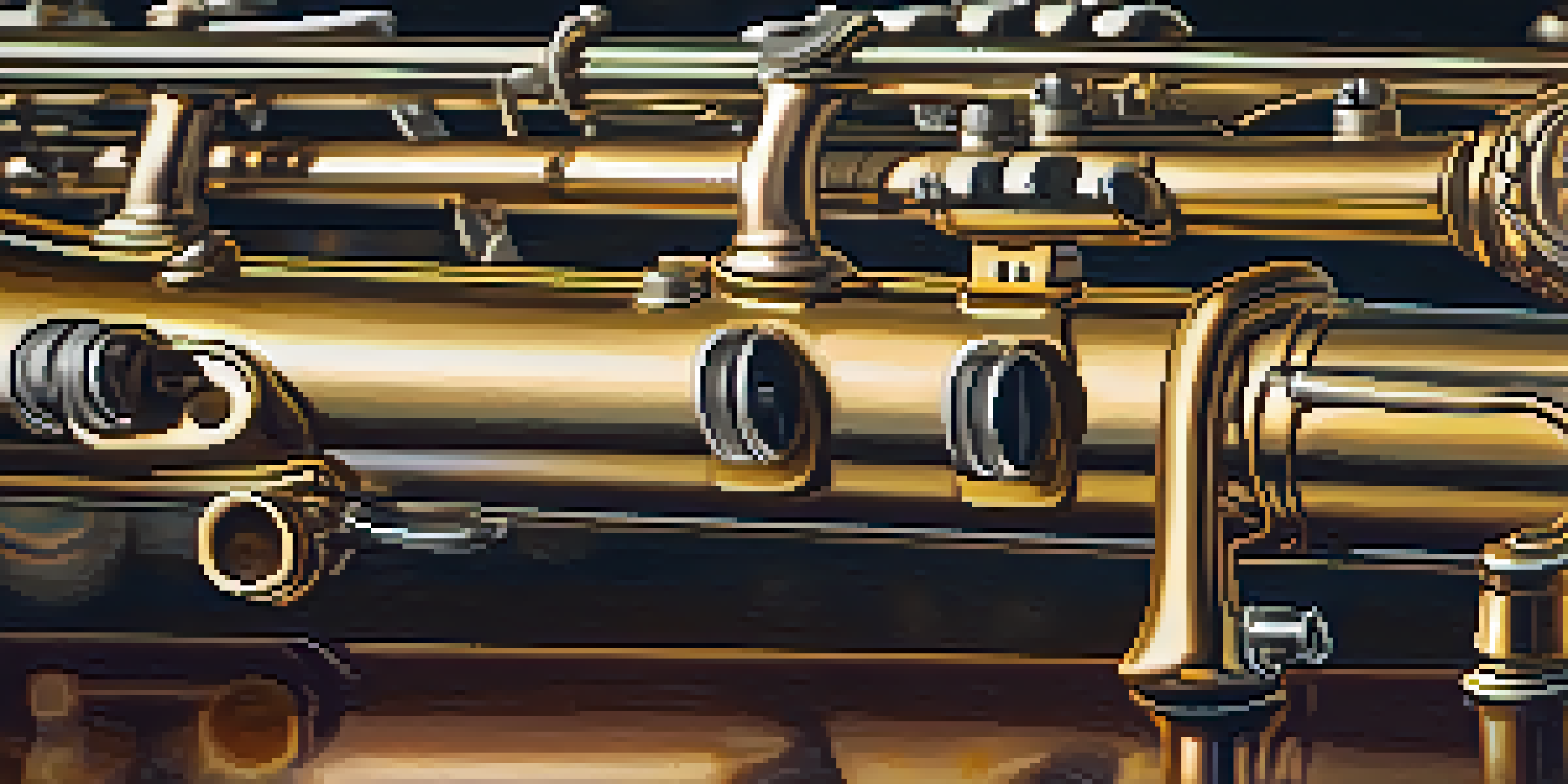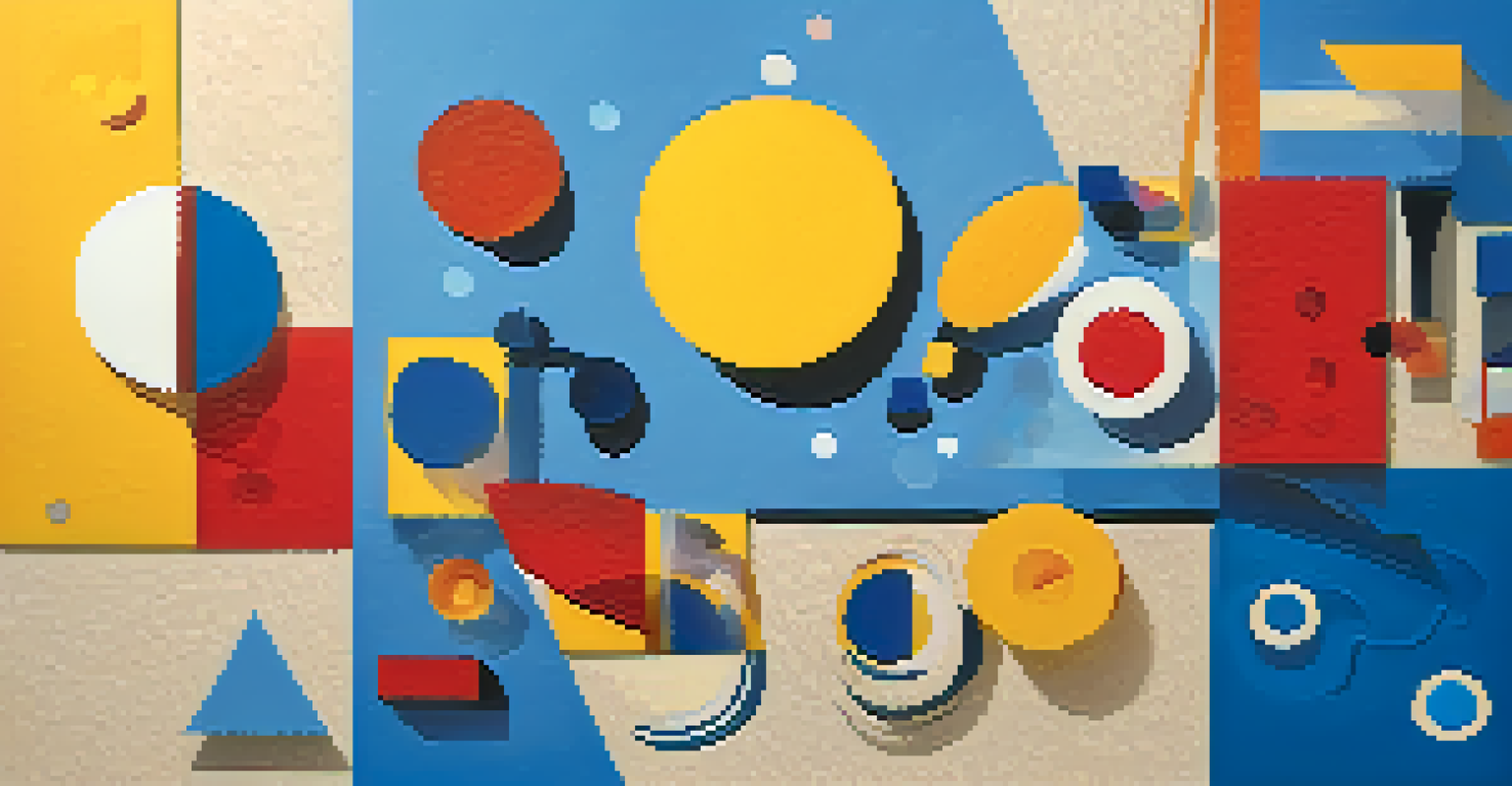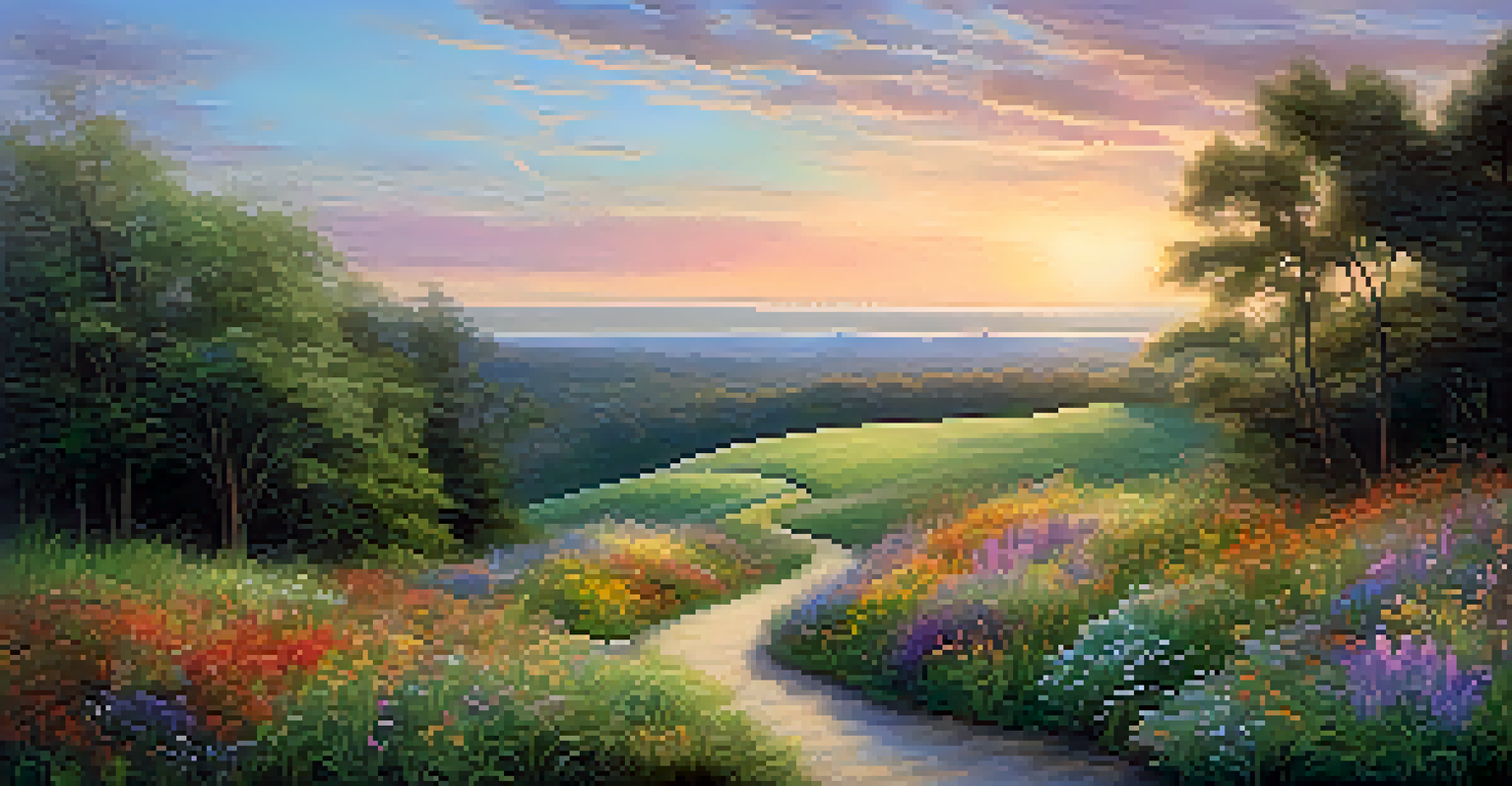Advanced Music Notation Techniques: Beyond the Basics

Understanding Extended Techniques for Instruments
Extended techniques refer to unconventional methods of playing instruments that produce unique sounds. For instance, using multiphonics on a woodwind instrument allows a musician to produce multiple notes simultaneously. This not only enriches the texture of the music but also challenges both the player and the listener's perceptions of conventional sound.
Music is the shorthand of emotion.
Composers like John Cage and George Crumb have effectively utilized these techniques to create innovative works. By incorporating these methods, you can push the boundaries of traditional music notation, making your compositions stand out in a crowded field. Experimenting with these techniques might even inspire new ideas or themes in your work.
As you explore these advanced notations, consider how they can be notated clearly for performers. Providing detailed instructions and examples will help musicians interpret your intentions, ensuring that the unique qualities of the extended techniques shine through in your compositions.
Utilizing Graphic Notation for Artistic Expression
Graphic notation is a visual representation of music that goes beyond traditional staff notation, allowing for more creative freedom. This technique can include shapes, colors, and symbols that represent sound rather than specific pitches or rhythms. For example, a wavy line might indicate a glissando, while different colors could signify varying dynamics or emotional states.

This form of notation invites performers to interpret the music in their own way, resulting in a unique performance each time. Notable composers like Cornelius Cardew have embraced graphic scores, encouraging musicians to engage with the music on a more personal level. By using graphic notation, you can convey complex ideas that might be challenging to express through standard notation.
Explore Unconventional Techniques
Extended techniques, like multiphonics and microtonality, enrich musical compositions by challenging traditional sound perceptions.
When creating graphic scores, clarity is key. Aim for a balance between artistic expression and communicative effectiveness, ensuring that your intentions are easily understood. With practice, you’ll find that graphic notation can be a powerful tool for both composition and performance.
Exploring Microtonality in Contemporary Music
Microtonality involves the use of intervals smaller than the traditional semitone, creating a rich palette of sounds. This technique opens up new avenues for composers, allowing for the exploration of scales and tunings that are unfamiliar to the Western music tradition. Composers like Harry Partch have famously utilized microtonal scales to create entirely new musical systems.
The notes I handle no better than many pianists. But the pauses between the notes—ah, that is where the art resides!
Incorporating microtonality into your compositions can evoke a sense of novelty and intrigue, drawing listeners into a fresh auditory experience. To notate these microtonal elements, you can use special symbols or even create your own notation system to represent the specific pitches you have in mind. This flexibility allows for a more personalized approach to your music.
As you delve into microtonality, it's essential to consider how performers will interpret your notation. Providing clear explanations and examples will help bridge the gap between your creative vision and the musicians' execution. With patience and experimentation, microtonality can become a rewarding aspect of your compositional toolkit.
Integrating Technology into Music Notation
Advancements in technology have transformed how music is notated, offering composers a range of tools to enhance their workflow. Software like MuseScore and Sibelius allows for intricate notations, making it easier to experiment with complex rhythms and harmonies. These platforms can also produce high-quality scores that are visually appealing and easy to read.
Additionally, technology enables composers to create interactive scores or multimedia presentations that engage audiences in new ways. Imagine a score that incorporates video or audio elements, allowing listeners to experience the music conceptually as they read along. This innovative approach can deepen the connection between the music and its audience.
Use Clear Notation for Innovation
Effective notation, whether traditional or graphic, is essential for conveying complex ideas and ensuring performers understand the composer's intentions.
As you explore technological tools, remember to maintain a balance between innovation and clarity. While it’s exciting to experiment with new formats, ensure that your notation remains accessible to performers. Embrace technology as a means to elevate your compositions while keeping communication at the forefront.
Implementing Non-Traditional Time Signatures
Non-traditional time signatures can add a unique rhythmic flair to your compositions, challenging both performers and listeners. By using irregular meters like 5/4 or 7/8, you can create unexpected shifts in the music that keep your audience engaged. Composers such as Béla Bartók and Stravinsky have famously employed these techniques to enhance their works.
When notating non-traditional time signatures, it’s essential to provide clear guidance on how they should be interpreted. Consider using visual cues, like beams or brackets, to help musicians navigate complex rhythms. This clarity will aid in the successful execution of your artistic vision.
As you experiment with these unusual time signatures, pay attention to how they interact with your melody and harmony. The rhythmic complexity can transform the overall feel of a piece, making it more dynamic and exciting. Embracing non-traditional time signatures can be a game changer in your compositional style.
Using Extended Dynamics for Expressive Performances
Extended dynamics refer to the broad range of volume and intensity that can be expressed in a performance. By notating dynamic markings that go beyond traditional terms like 'piano' or 'forte,' you can encourage performers to explore their expressive capabilities. For instance, incorporating terms like 'whispered' or 'explosive' can provide more insight into the desired emotional impact.
Dynamic contrast can significantly affect the overall atmosphere of a piece, allowing for dramatic shifts that engage the listener. Composers like György Ligeti have effectively used extended dynamics to create tension and release in their works, captivating audiences with their emotional depth. This technique can transform ordinary passages into moments of profound expression.
Embrace Collaboration in Music
Collaboration enhances composition by integrating diverse perspectives, making clear notation crucial for a cohesive creative process.
When implementing extended dynamics, consider how they will be notated and interpreted by the performers. Providing detailed instructions and examples will ensure that your intentions are communicated effectively. With careful consideration, you can harness the power of dynamic variation to elevate your compositions.
The Role of Notation in Collaborative Composition
In collaborative composition, clear notation is vital for ensuring that all musicians are on the same page. Whether you're working with a small ensemble or a larger orchestra, effective communication through notation can streamline the creative process. This clarity helps prevent misunderstandings and allows for a more cohesive performance.
Collaboration often brings diverse musical perspectives together, which can lead to exciting new ideas. By incorporating different notational techniques, you can find common ground that respects each musician's unique voice. This openness can foster an environment of innovation, resulting in compositions that are richer and more dynamic.

As you collaborate, remember that notation is not just a tool for communication but also a reflection of your collective artistic vision. Encourage input from all collaborators, as their insights can enhance the notation process. Embracing collaboration will ultimately lead to a more fulfilling and successful compositional journey.